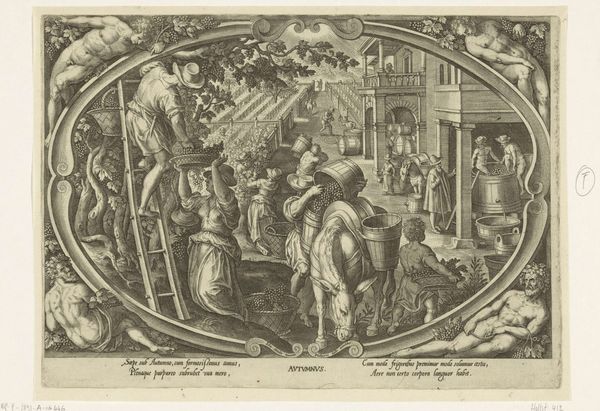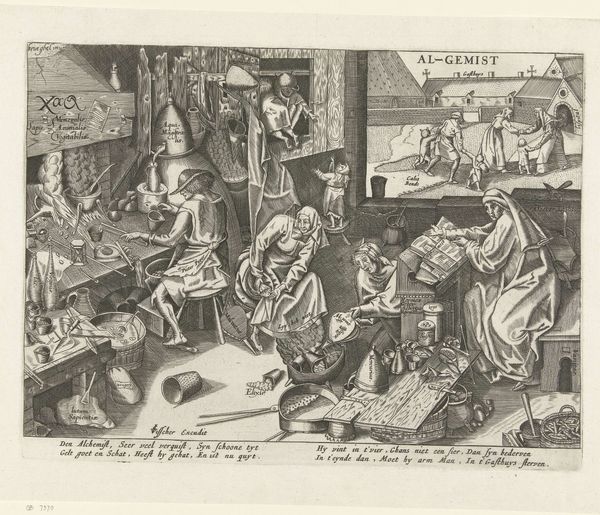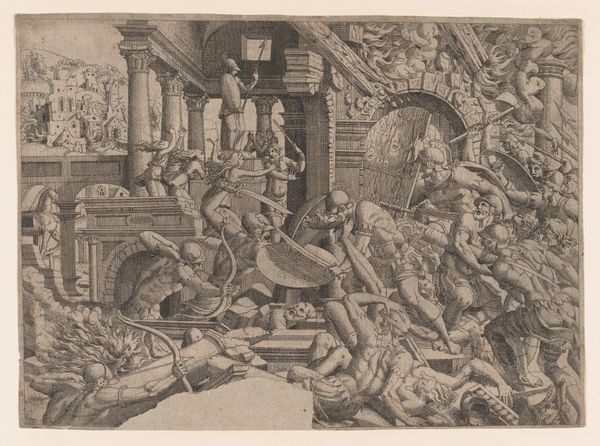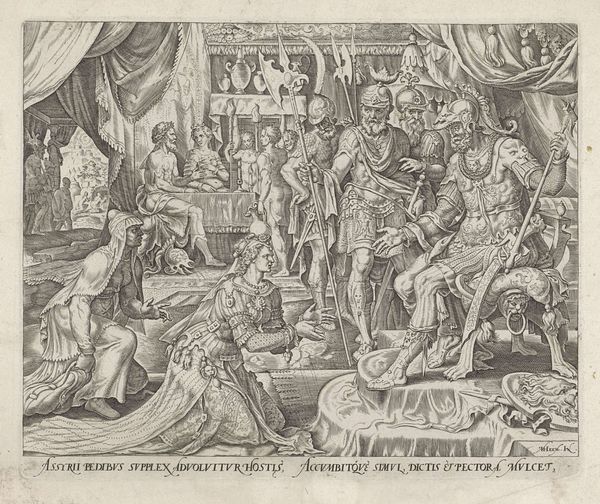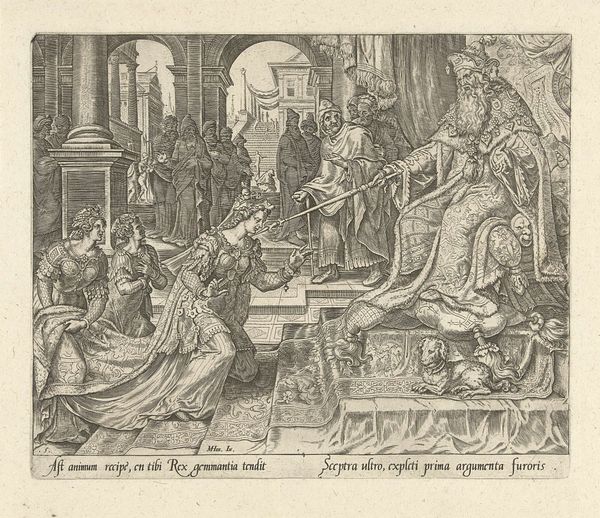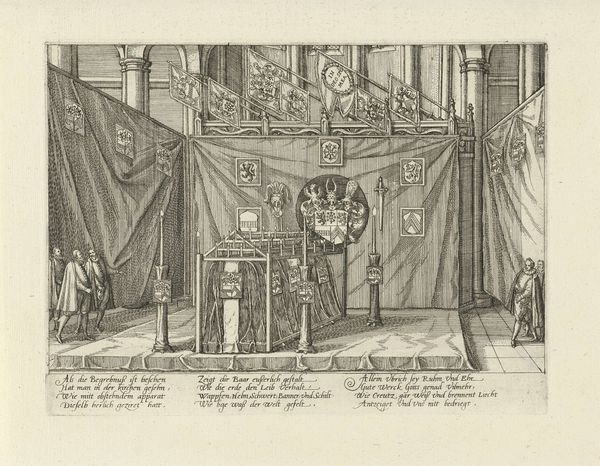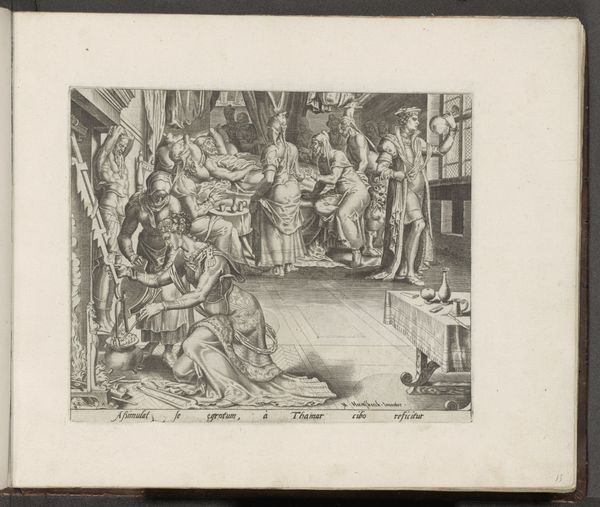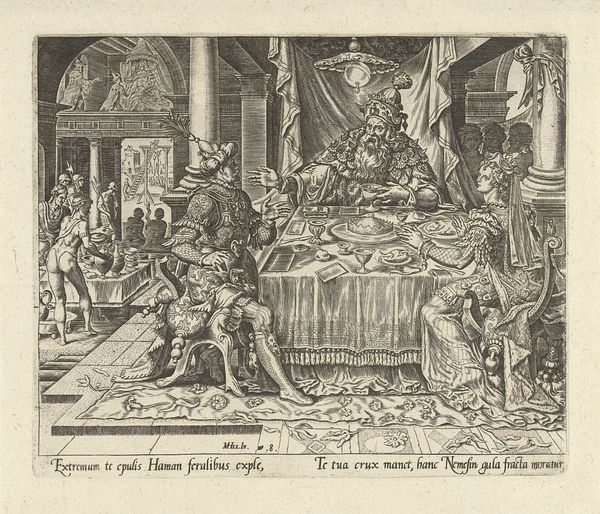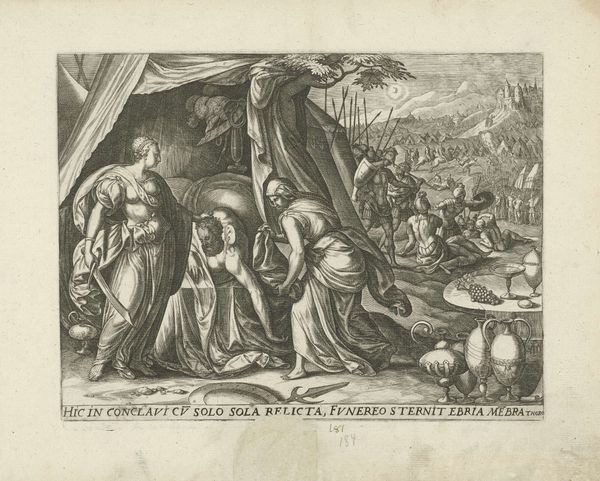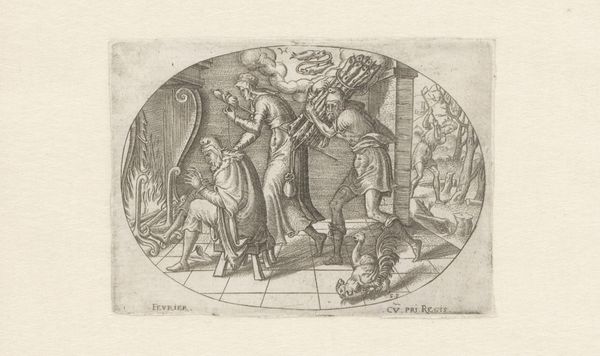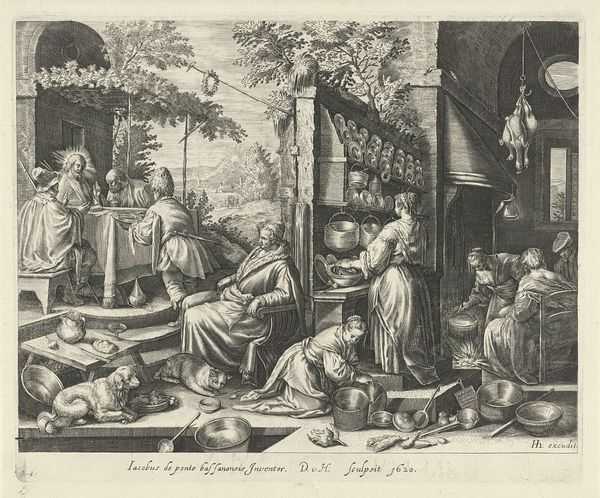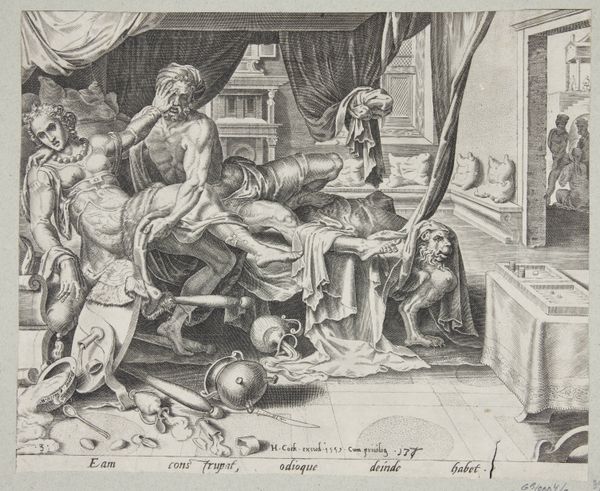
print, engraving
#
narrative-art
# print
#
figuration
#
history-painting
#
northern-renaissance
#
engraving
Dimensions: height 203 mm, width 247 mm
Copyright: Rijks Museum: Open Domain
Curator: My initial impression? Claustrophobic opulence. The scene, although meticulously rendered, feels incredibly cramped, almost airless, don’t you think? Editor: We're looking at "Judit onthoofdt Holofernes," a striking engraving created in 1564 by Philips Galle, currently housed at the Rijksmuseum. What we have here is an iconic scene rendered in minute detail: Judith, in the very act of beheading Holofernes. The tension is palpable, wouldn’t you agree? Curator: Absolutely. The cross-hatching is so dense, especially in the foreground figures. It practically vibrates with a contained violence, doesn't it? And it's fascinating how Galle manages to compress the vastness of the biblical narrative into this incredibly intimate, almost theatrical setting. It feels like peeking into a forbidden room. Editor: Indeed, the compression serves to heighten the psychological drama. The composition, too, is carefully orchestrated: the dramatic arc of Judith’s arm mirroring the limp form of Holofernes. It’s a masterful display of line work. You can trace not just her form, but her determination and agency, so clear here in her strong silhouette against the chaos of Holofernes' bed and body. It's hard not to get the sense that she has thought out every minute aspect of the job. Curator: And the contrast between Judith's elaborate dress and the stark brutality of her actions – the jewel-encrusted garments clashing with the grim task at hand, almost a warning on the inherent darkness of excess. Perhaps this tension of opulence and sacrifice is a critical focal point for our current listeners, the message within such a complex creation. It's rather gripping when you consider all these possibilities, and their relevance to how art affects and reflects on the world today. Editor: Precisely. Galle masterfully interweaves elements of history, morality, and pure visual spectacle. What emerges is a powerful reminder of the enduring relevance of narrative art. Curator: Yes. Every time I return to this piece, I always glean some new insight, some new thread to follow and analyze. This image speaks to us in volumes, doesn’t it? Editor: Indisputably. It resonates across centuries.
Comments
No comments
Be the first to comment and join the conversation on the ultimate creative platform.


